The move to the factory in 1846 brought about a real change in the working conditions of the employees - hot, cramped conditions gave way to more spacious and light premises. An increasing amount of the work was mechanised and employees had to adapt from hand-processes.
Hours of work
Compared to the 40 hour week of today, in the 1850s the average working week included long hours and Saturday work. Work started at 6.30am and finished at 6.30pm with a 40 minute break for breakfast and one hour for lunch. Refreshments could only be taken during break times which meant working for 4 hours without anything to drink. In 1872 the working week for men was reduced to 54 hours, the same as for women.
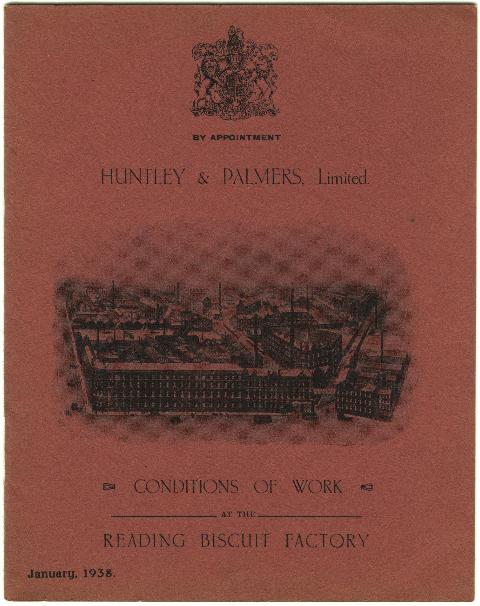
This booklet details the rules for employees at the Reading Biscuit Factory in 1938, including penalties for lateness - although there was a three minute grace period to account for the walk from the factory gate to clocking stations. (REDMG : 1997.82.10)
Holidays
Regular days off for the employees were given from the outset. In the 1860s there were between 5 ½ and 7 ½ days per year – Good Friday, Whit Monday and three or four days off at Christmas. Local events such as the Henley Regatta and Agricultural Shows qualified for ½ days off. No wages were paid for holidays until 1873 when employees were paid for Christmas day.
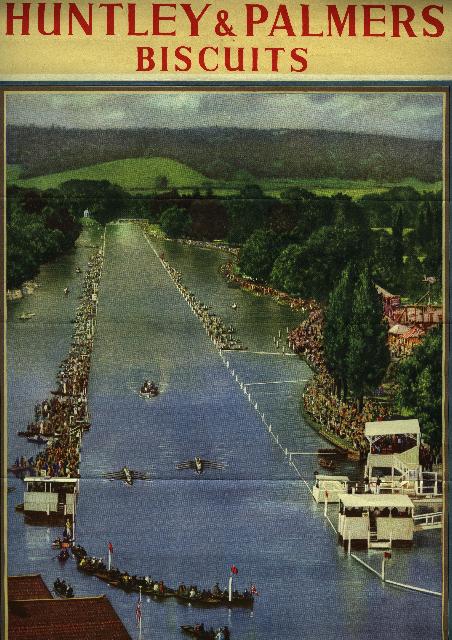
A Huntley & Palmers wall calendar of the Royal Henley Regatta and the River Thames' Straight Mile. The firm also gave their employees the chance to take part in rowing through its support for the Reading Working Men's Regatta. (REDMG : 1997.120.243)
Running in the family
Huntley & Palmers actively encouraged whole families to be employed by the firm. The company’s first employee, Richard Brown, was followed in the firm by three sons, a grandson and a great grandson. But the most famous father and son team were the cake icers Jack Bryant and his father William Bryant. In 1954, when they were interviewed by the BBC, Jack had been decorating cakes for 41 years and his father had completed 62 years of service.
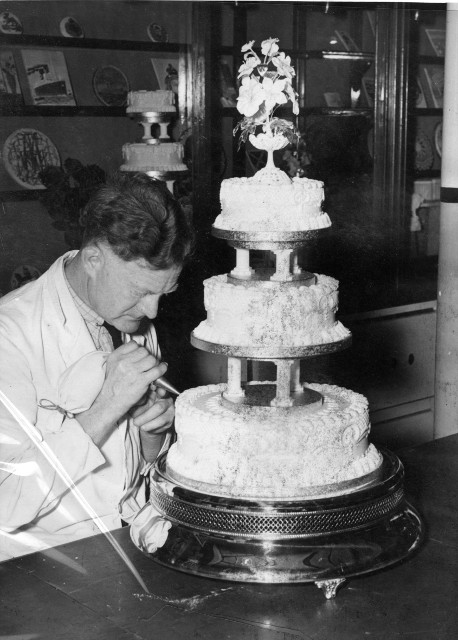
Jack Bryant ices a multi-layered cake. In 1947 he worked for three weeks, including weekends, to ice the 195lb royal wedding cake for the marriage of Princess Elizabeth and Prince Philip.(REDMG : 1997.130.538.9)
Wages
Each week every worker received a pound of broken biscuits. This led to the saying that the pay at Huntley & Palmers was ‘a pound in cash and a pound of biscuits’. However most workers received less than a pound a week (£1 was 20 shillings). While Huntley & Palmers paid their office staff and ‘skilled’ workers relatively well, the majority of workers, particularly women, were not well paid. In 1861 the average weekly wage was 16s 9d for men and 8s 8d for women and girls. By 1894 this had risen to 20s 1d for men and 9s 3d for women and girls.
Pay reviews
Until the 1870s each employees pay was decided by the partners every six months. Wages could go down as well as up and, for a few who saw their wages reduced, it could be many years before their salary returned to its original level. As the number of workers rose to over 3,000, this system became impracticable and during this time a standard wage was laid down according to the age and the type of job.
Certain workers did not receive a weekly salary but were paid on piece rates. This included employees who made hand-made biscuits or stuck labels onto tins. Those making cakes were also paid a piece-work rate. Bakers received basic skilled rates - 24s on wires and 25s on tins - but penalties were charged for spoilt biscuits.
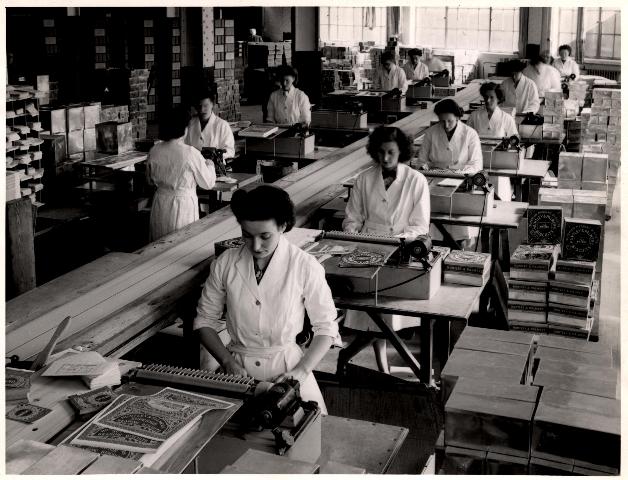
Female Huntley & Palmers workers dry pasting labels on to tins for export. (REDMG : 1997.130.347)
Better paid workers
In addition to the office staff who received better wages than factory workers, some of the more senior manual employees also received reasonable pay. The Foreman of the factory earned £140 a year in 1859 as well as having the rent of his house paid.
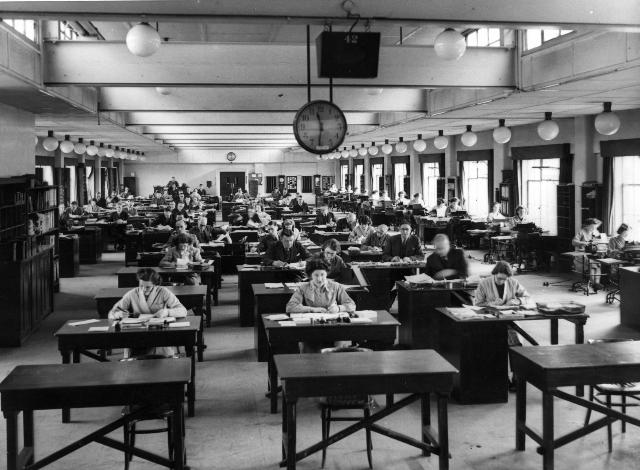
Until 1904, the office staff were all men. However, by the late 1930s - when this photograph was taken - the workforce was noticeably more mixed. (REDMG : 1997.130.427)
Differing wage rates
From 1895 onwards the Personnel Manager’s book noted all wage rates for every type of work:
- Girls wages ranged from 4s at 14 to 10s at twenty, with the top girl getting no more than 12s.
- Boys were paid 5s at 13, rising to 13s at 18, but were then dismissed unless there were men’s jobs available.
- The Foreman in 1895 earned between 36s and 40s and his deputy about 26s.
- The operatives' wages depended on the task - for ‘rolling down the dough’ an employee received 22s, but only 20s for ‘squaring up the dough’.
Learn more about the rules and regulations at Huntley & Palmers in the next section.





